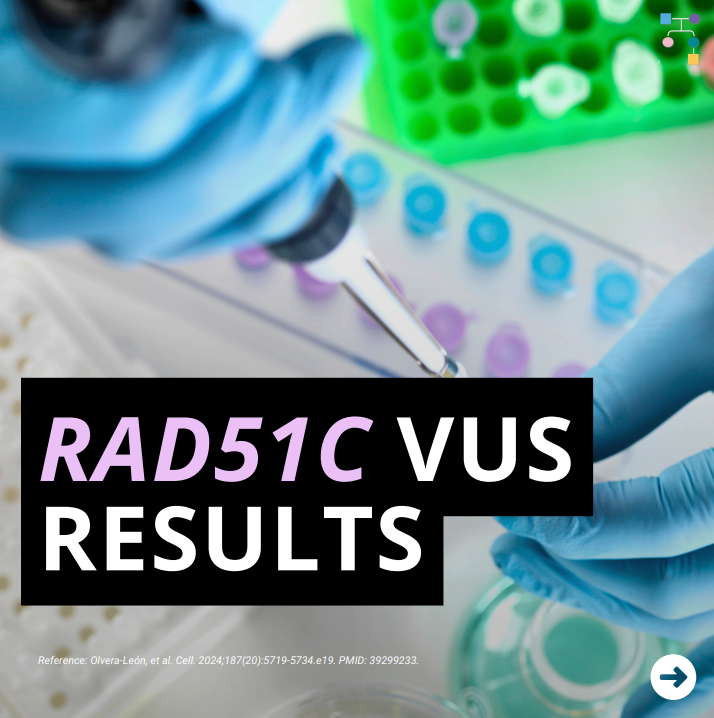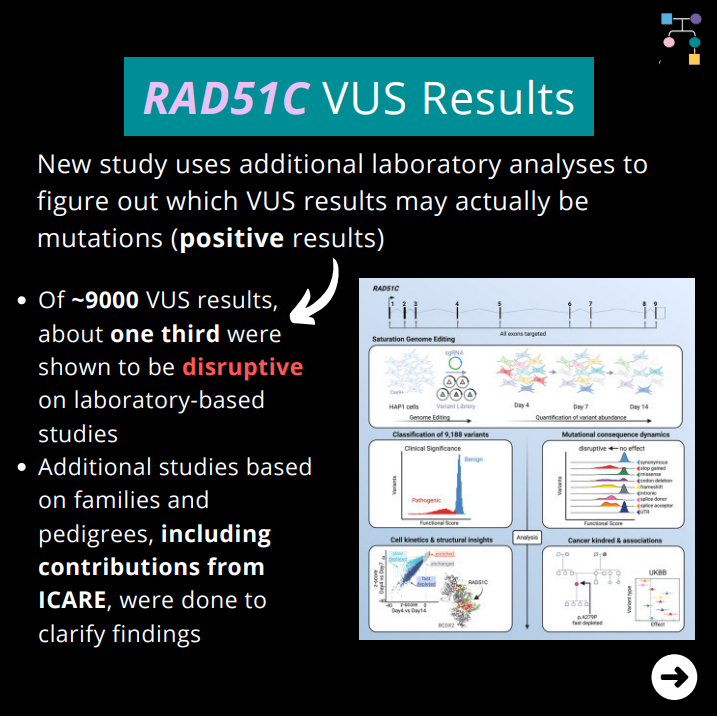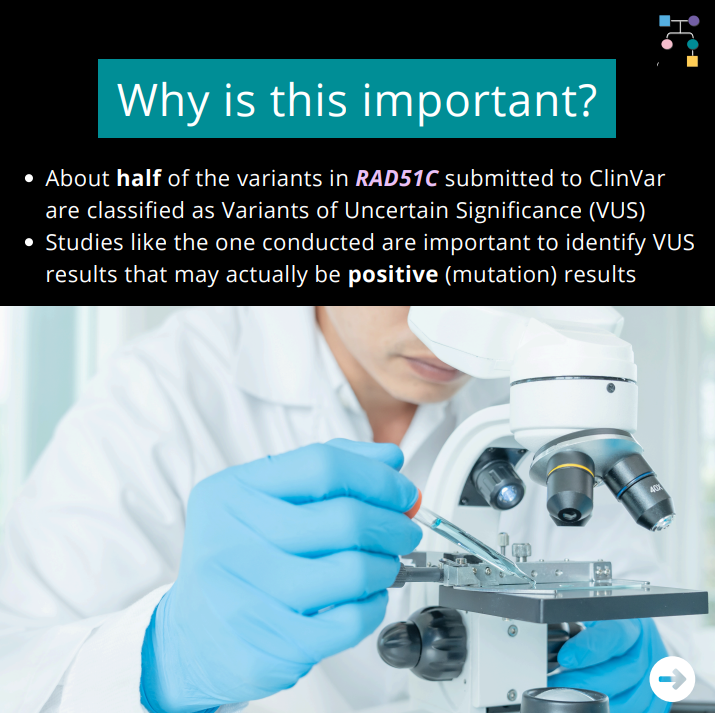



🔬A new study uses additional laboratory analyses to figure out which Variant of Uncertain Significance (VUS) results may actually be mutations (i.e., positive results):
- Of ~9000 VUS results, about one third were shown to be disruptive on laboratory-based studies
- Additional studies based on families and pedigrees, including contributions from ICARE, were done to clarify findings
📈 Why is this important?
- About half of the variants in RAD51C submitted to ClinVar are classified as VUS results
- Studies like the one conducted are important to identify VUS results that may actually be positive (mutation) results
Read the full article to learn more at: https://www.sciencedirect.com/science/article/pii/S0092867424009681
Reference: Olvera-León, et al. Cell. 2024;187(20):5719-5734.e19. PMID: 39299233.
